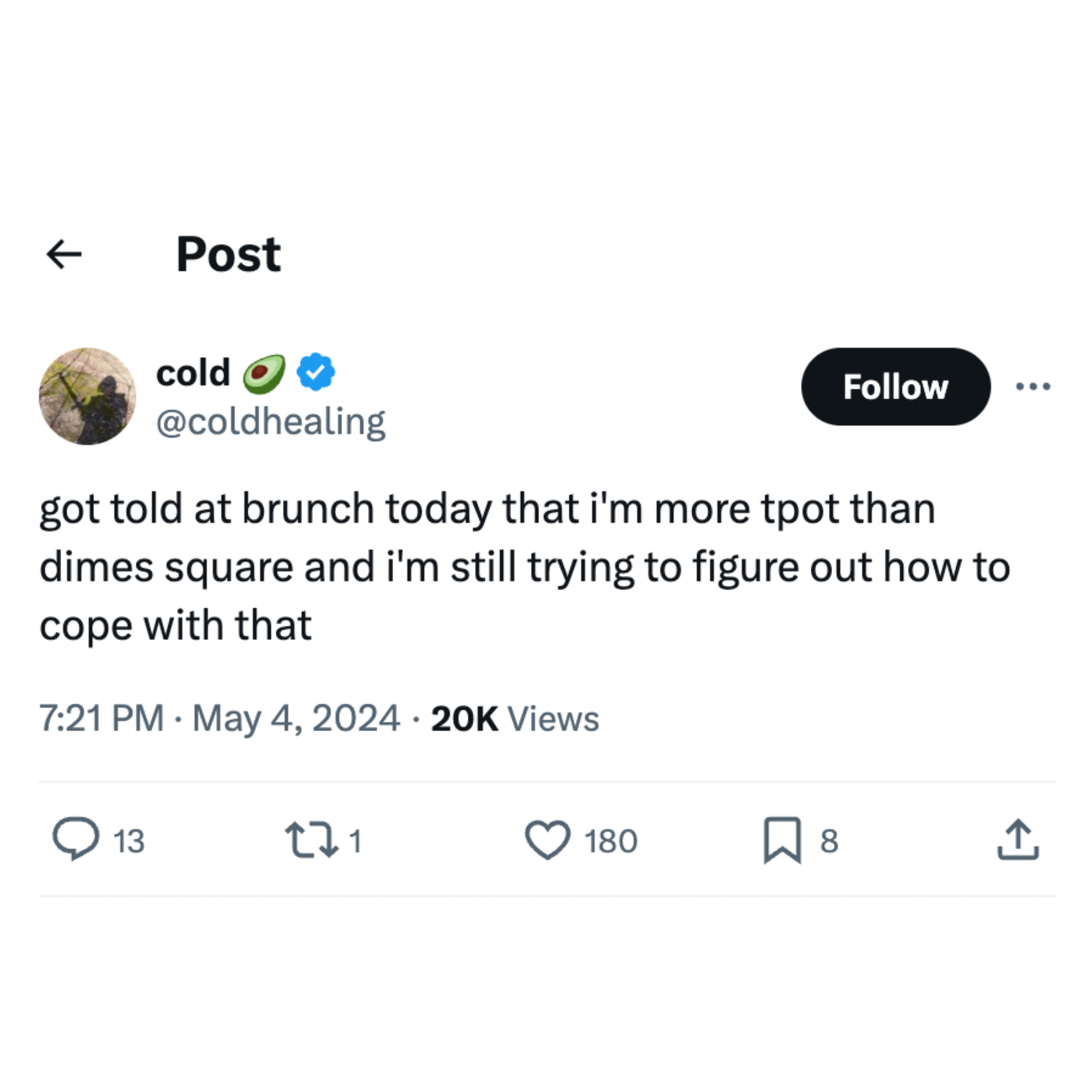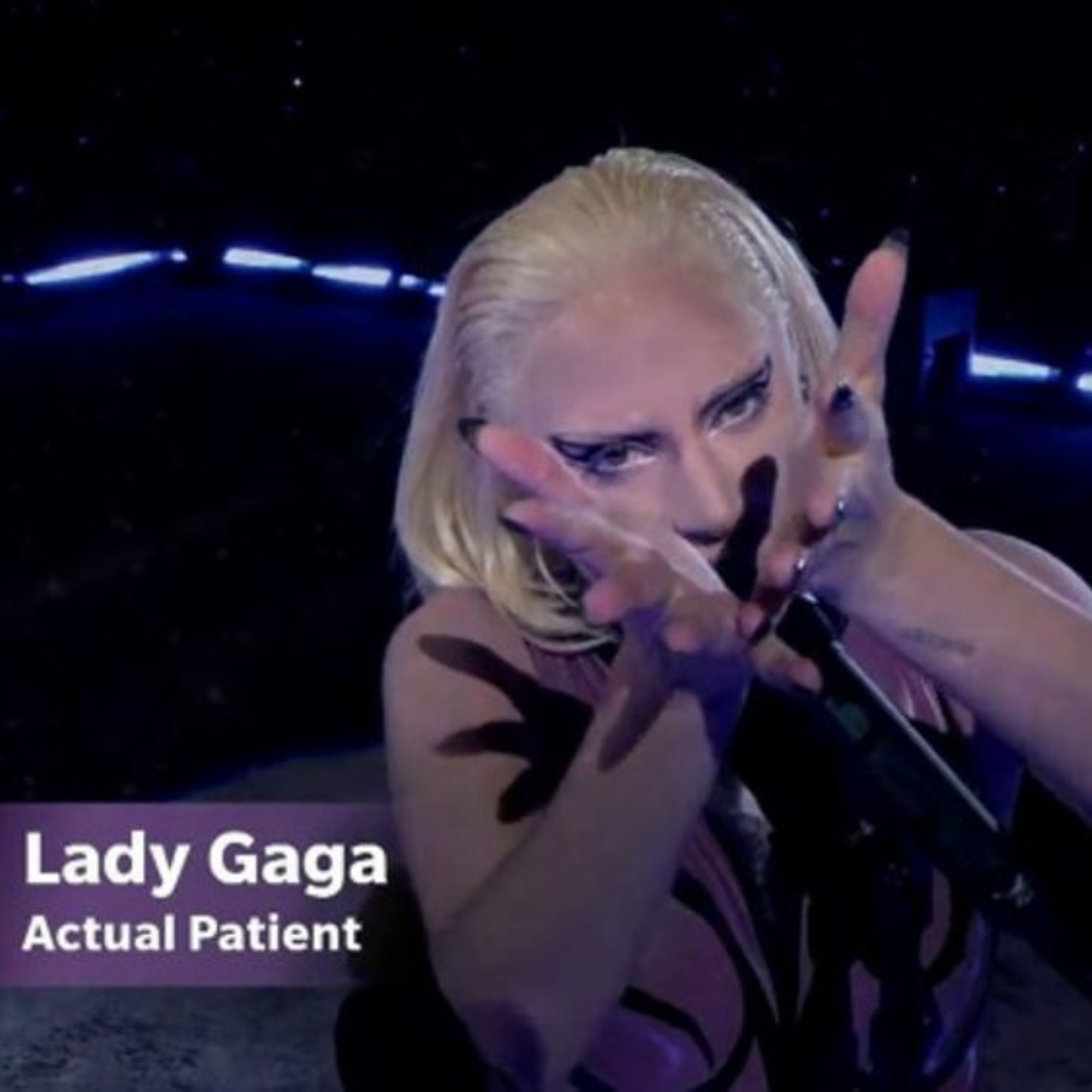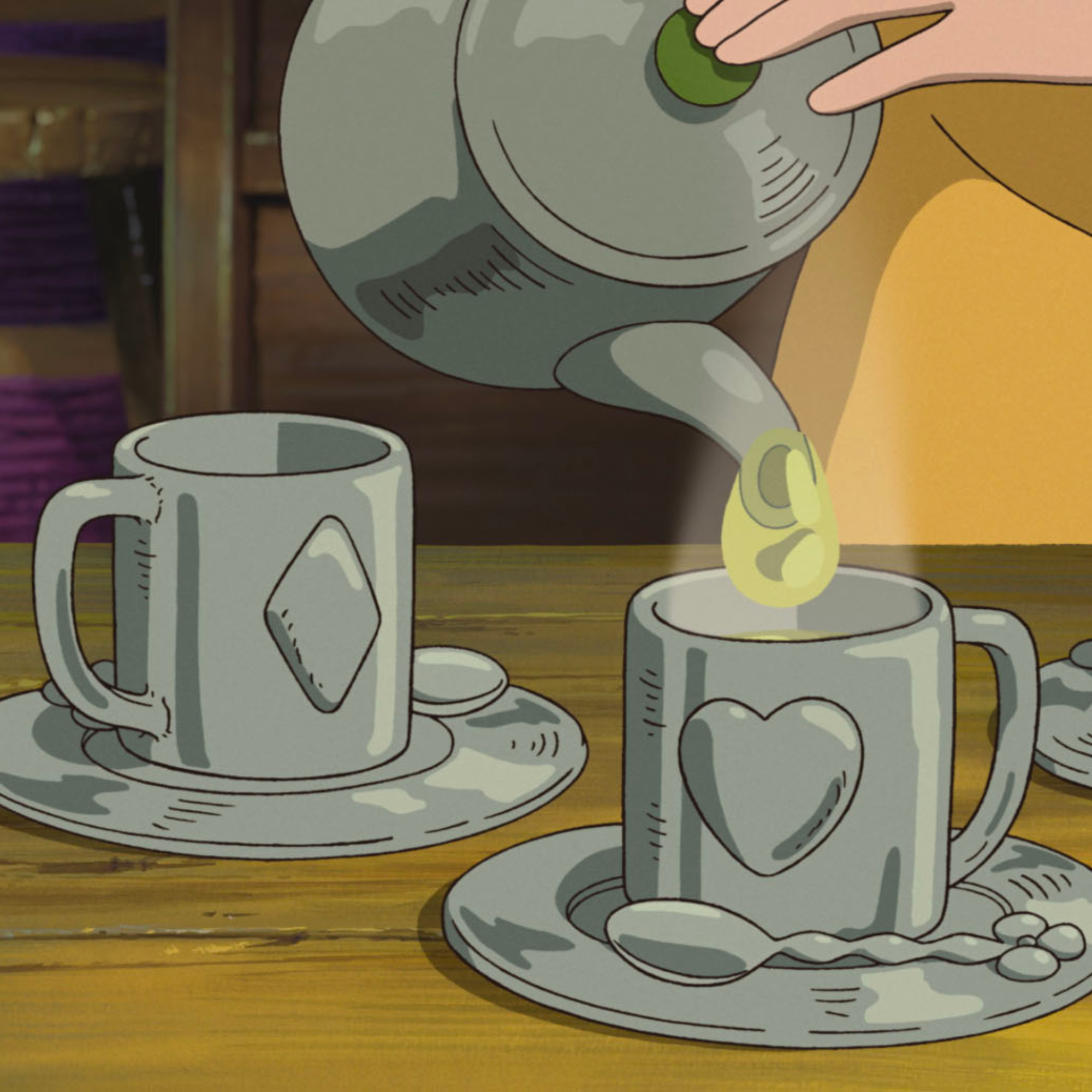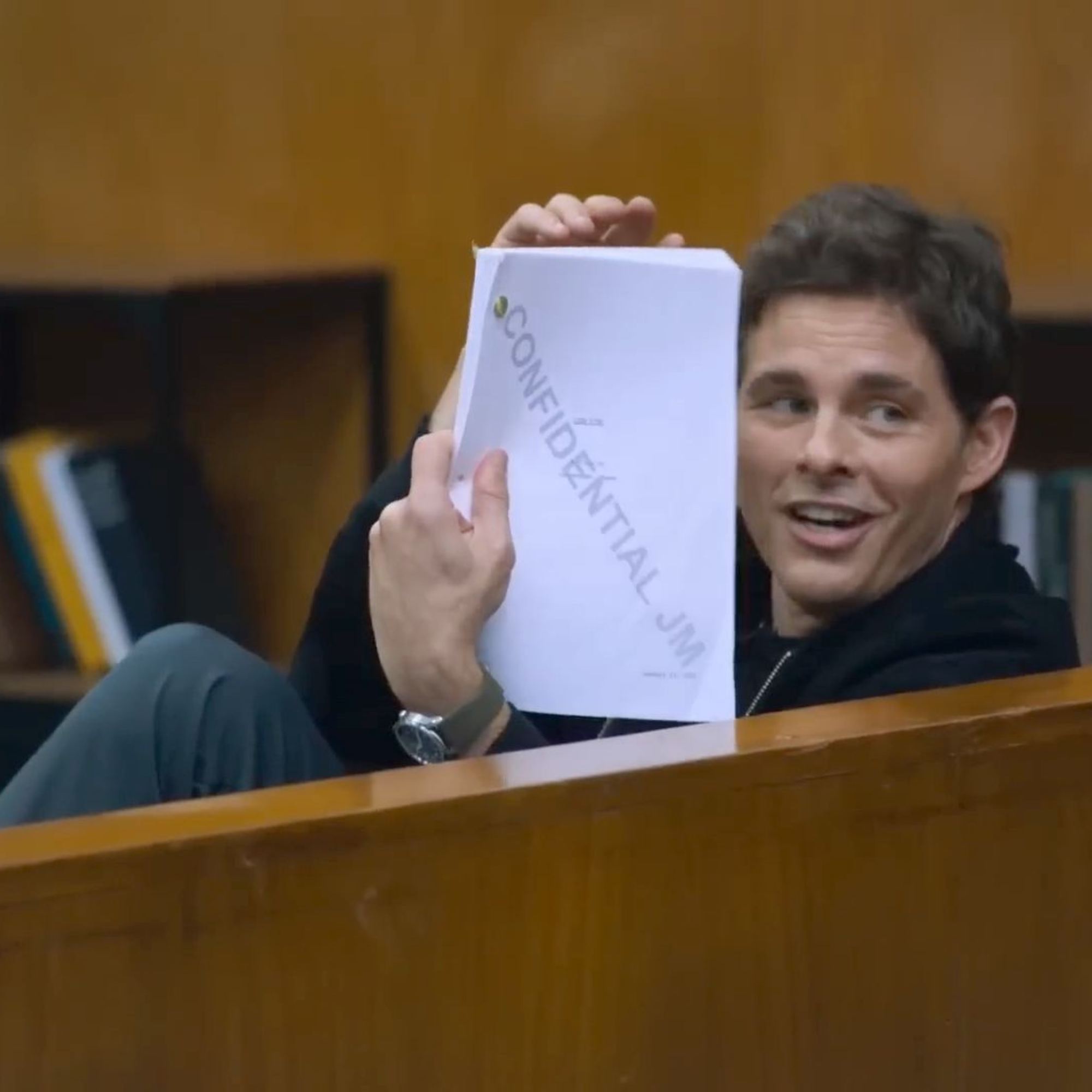- Magazine Dirt
- Posts
- Two kinds of people
Two kinds of people
Literary binaries.

Miranda July, Nichols Canyon Road, 2020
Kara Rota on Miranda July, saints and sinners, and more.
There are two kinds of people: those who are one kind of person and those who aren’t.
Lately I can’t seem to escape binaries everywhere, sorting people into one of two neat categories. Early on in All Fours by Miranda July (May 2024), the narrator’s husband delivers a flirtatious monologue on the difference between Drivers and Parkers. Drivers are people who can be content getting the mundane done and watching the world go by, he explains, while Parkers need a near-impossible challenge guaranteed to garner them instant validation in order to be happy.
Years after leaving New York for the suburbs of Chicago, I still can’t drive––but I already know what I am—the binary could just as easily be shifted into the difference between the settled and the restless. It’s the part in Big Little Lies when Mary Louise says to Madeline, “you’re a wanter”. Or in Daisy Alioto’s essay Yearn in Review, the difference between romantics and sentimentalists (“Romantics have poor instincts and great execution. Sentimentalists have great instincts and poor execution”). In some ways, these two-kinds-of-people distinctions are a harmless kind of party talk, a meme format that works to create closeness in two ways: look how alike we are; you’re the same kind as me. Or: look how we complement one another. You’re my perfect opposite.
Here are some examples of two kinds of people that you’ve probably heard. Saints and sinners. Thinkers and doers. Lovers and haters. The desired and the desiring. People who are particularly sensitive to the taste of aspartame, cilantro, capsaicin, or the bitterness chemical PTC, and those who aren’t. People who have very neat handwriting and people who have very bad handwriting. People who can extrapolate from incomplete data. The kind I am, and liars. My love and me, and everyone else.
The next two-kinds-of-people I came across was in Lillian Fishman’s recent advice column in The Point arguing that many relationship challenges stem from the difference between sex mystics and sex hobbyists. The column gave useful language to what had always icked me about sex parties and kink-specific apps: the separation of sex into a discrete category Over There, the same separation that characterizes the separation of nature itself into a fenced-in area Over There. As if our evolutionary past is a national preservation available to be boundaried and roped off from affecting us here, in our real lives.
But what if the binary isn’t between us, but between us and the people who aren’t thinking about it at all?
All of us who are interested in the overlap between sex and meaning should be thinking about the balance between mysticism and hobby in our approach. But what if the binary isn’t between us, but between us and the people who aren’t thinking about it at all? What happened to containing multitudes? Even the most compelling of binaries is, by definition, limiting—the goal of a binary should be to help us shape the parameters of something so we can explore the vast space inside of it.
When I wrote my undergraduate thesis about binaries and cyborg posthumanism, almost fifteen years ago, I was obsessed with the idea that there was something truer to get at inside the in-between place, that continually trying to see binaries as a starting rather than an ending point would be important for me. Like the many college students assigned it before me, I fell hard for Donna Haraway’s Cyborg Manifesto (1985).
Haraway writes that the binaries that most shape us can be tools of internalized oppression: “…certain dualisms have been persistent in Western traditions; they have all been systemic to the logics and practices of domination of women, people of color, nature, workers, animals—in short, domination of all constituted as others, whose task is to mirror the self.” The problem with defining yourself in relation to a Here and an Over There, is that the two regions are rarely allowed to exist equally—even inside one person, country, religion or marriage.
“Chief among these troubling dualisms are self/other, mind/body, culture/nature, male/female, civilized/primitive, reality/appearance, whole/part, agent/resource, maker/made, active/passive, right/wrong, truth/illusion, total/partial, God/man,” Haraway continues.
Revisiting Haraway now reminds me that there is no getting beyond binaries, that we can’t give up on binaries, we cannot destroy them, although they’re built for the pleasure of deconstruction, like a room where you pay to smash things with a sledgehammer. Binaries are inescapable, consistently rearticulated and affirmed by our social environment. Most of all, we must be vigilant about binaries. Remembering to see them as a starting point, a comfort zone to push past, to inspire resistance rather than passivity.
But to take a binary at face value, simply because it feels true, is another kind of loss.
In the last ten years, I got lazy about it. Blame Twitter, blame motherhood, blame a decade in which I felt there was no space in any discourse for the dreaded “nuance” that too often precedes both-sidesism, that so creepily, consistently wheedles its way into the worst kind of oversimplification. But to take a binary at face value, simply because it feels true, is another kind of loss.
When I tell my friend about my two-kinds-of-people concept, she asks for some examples of people who are one kind of person.
We go back and forth for a while, not quite getting it right: Stanley cup enthusiasts. Her friend Ted who likes the Yankees and to be in charge of the grill. People who read books about finance instead of novels. Who go into the wine store and talk to the proprietor just so that they have something to say about the wine when serving it to someone. Parents who only talk about their kids. People who like acoustic covers of classic rock and pop songs. Hey, I say, I love acoustic covers of classic rock and pop songs. Take that one back.
The list feels snobbish, coded. I’m biased; I obviously prefer people who are more than one kind of person. I like to be surprised in my interactions, to learn a secret about a friend I’ve known for decades that shocks me. I like to see people I love as if for the first time. The one-kind-of-person industry is invested in coding contempt for predictability as immature, even amoral, but I see right through that. It’s not just anti-intellectualism but anti-curiosity.
One-kind-of-person is a clear advertising demographic. One-kind-of-person, when given the choice between two evils, doesn’t imagine a third, or fourth, or one hundred and forty-sixth thing. None of us, in our secret hearts, are truly one kind of person.
None of us, in our secret hearts, are truly one kind of person.
What drew me so desperately to Haraway at twenty, eager to find a way of being in the world that I could commit to, could follow towards something I wanted that I hadn’t yet (then, or maybe even now) learned to articulate, was her additive lens: her commitment to both/AND, to celebrating a purposeful, pleasurably rigorous way of being. Haraway dreamed of a world in which people might strive to be “not afraid of permanently partial identities and contradictory standpoints.”
Containing multitudes is part and parcel of the human condition. Crack the lid on any Ted and with a little elbow grease you’re liable to find a love of opera, or a penchant for karaoke, or an appreciation of experimental poetry, or a truly singular porn search history. Multitudes are one thing; multitudes are universal. Maybe when I talk about people who are more than one kind of person, what I really mean is people who are made up of contradictions.
In Valeria Luiselli’s 2011 novel Faces in the Crowd, the two types of people are “those who just live, and those who design their lives.” That one feels closer. Life design sounds selfish, almost childish, something intended for a high schooler’s college search, or a point-and-click game, a sort of fantasy of control.
This is fine, one-kind-of-person says, the meme dog in the meme hat.
That’s the one-kind-of-person industry talking again. Ignore it. Life design is as vital to personhood as any other inalienable right being stripped away at a consistent pace, like bodily autonomy or the right to sleep outside. To look at your life, the available choices, and admit dissatisfaction with any part of it panics the system, especially for employees, parents, or the many who are both. To live beyond binaries, as Haraway imagined in a cyborg future worth fighting for, is to trouble the predictability that, in lieu of any transactional motivation, allows the world to keep spinning.
One-kind-of-person shows up and goes through the motions, while the temperature climbs, while the atrocities pile up, while the house burns down. This is fine, one-kind-of-person says, the meme dog in the meme hat. Multitudes make space for release valves. Contradictions demand more, go further. More than one kind of person isn’t limited by the options available to their character thus far, their D&D stats, the reactions on their Sims menu. More than one kind of person knows that a binary opens a portal, a space between, meant for stepping through. 🚪

ICYMI
|

VARIOUS PORTALS
|
|
|
|
|






